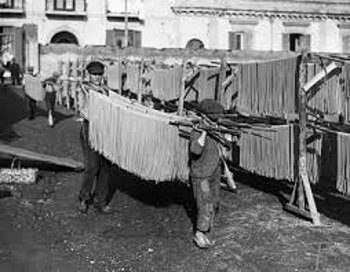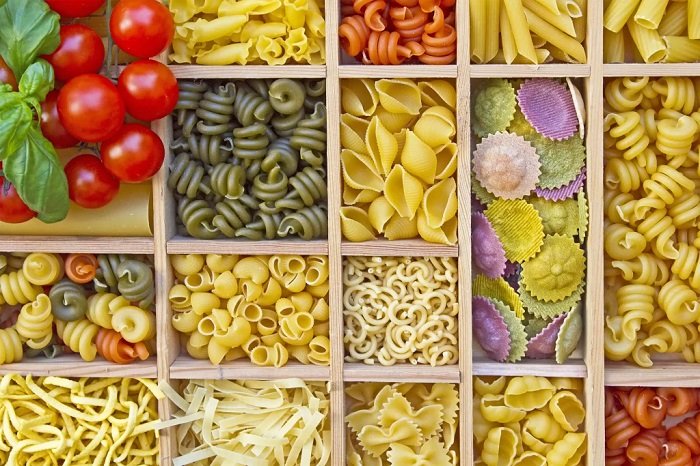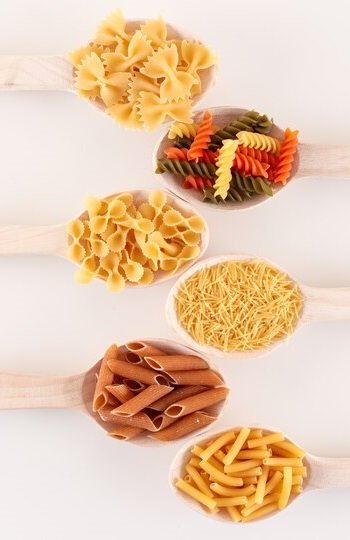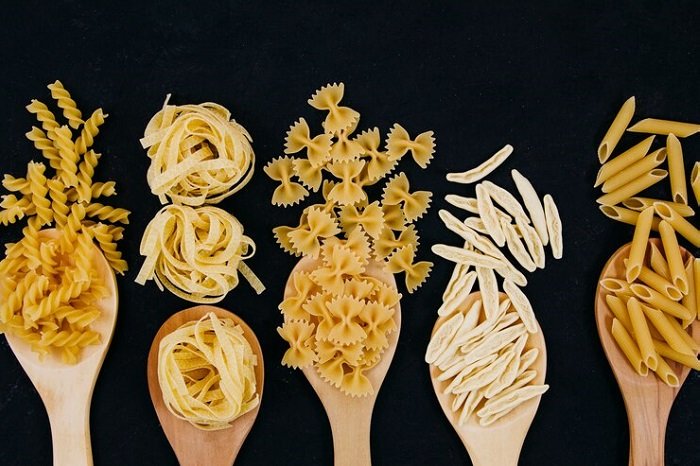The first mass-produced industrial product, pasta-aside from being good-is also beautiful: credit to Pasta Design, the industrial design of applied to pasta.
The first mass-produced industrial artifact was the book. Il torchio e i caratteri mobili permisero di produrre libri in grandi quantitativi, tutti identici tra loro.
A few centuries had to pass before we returned to the idea of industrial mass production, until the great technological explosion of the twentieth century, thanks to which industrialists, having happily solved the problem of producing, began to concern themselves with the outward appearance of manufactured goods, going beyond the simple concept of “decoration” hitherto applied to products, and intervening directly in the form.
Industrial Design

The mass-produced industrial product is asked not only to be “functional,” but also to be “beautiful,” “pleasing to the eye.” The industrial design. Yet, there is an industrial product that was being mass produced as early as the 17th century, meeting, almost two centuries in advance, those needs that industrial design solves today: the pasta. Dry pasta, in fact, arose from the need to have available a food product with a long shelf life and, at the same time, easy consumption.
“The invention” of pasta
The invention consists of creating a mixture of cereal flour and water, shaping it and drying it in such a way that, precisely in the absence of water, those bacterial growth phenomena that normally prevent food preservation do not occur.
The pasta maker’s skill consists first of all in selecting the right flours for this process according to various parameters (chemical characteristics, physical characteristics, volume increase, etc.). Thus in using A water that meets purity and hardness requirements such as to combine well with the flour and equally well aid the drying process. Then, to turn the dough into shapes that lend themselves easily both to the drying process and to subsequent consumption. Finally, to make the drying process in such a way that the characteristics of the product are not altered in either an aesthetic or organoleptic sense and that they can be preserved over time without deterioration. The industrialist who succeeds in respecting these premises is able to produce pasta “in series”, that is, huge quantities of all the same product that will be consumed at different times and in different places.
The mixture of water and flour needed to make dough has a consistency and elasticity that allows it to be shrunk into the widest possible range of shapes. Its ductility è such that we can liken it to clay, gold, and glass.
The different production requirements

But since its purpose is not purely aesthetic, in shaping it one must take into account numerous, sometimes conflicting requirements.
The forming process, for example, is followed by cooling and drying. Both of these processes impose special requirements: for dough, it is necessary to obtain shapes determined by thin structures, with homogeneous thicknesses, in which most of the material is also “outer surface,” easily in contact with air.
The need to store and transport the dough also conditions its shape: a design aimed only at solving the problem of perfect drying could lead us to an extremely fragile dough, capable of shattering at the first handling or transport.
In order to be consumed, then, the paste must regain the water lost during drying..
The importance of boiling
 This is done by boiling, in the course of which two different processes occur simultaneously: the dough regains its original amount of water and becomes soft, chewable, swallowable again, but at the same time the flour “cooks,” that is, subjected to intense heat treatment, is transformed in such a way that it acquires more palatable flavor and organoleptic structure that is more easily digestible. Since this is a process of a different nature, and not “inverse” to drying, it will be necessary to select, among the ideal forms for perfect drying, those that are best suited to this specific rehydration and cooking treatment.
This is done by boiling, in the course of which two different processes occur simultaneously: the dough regains its original amount of water and becomes soft, chewable, swallowable again, but at the same time the flour “cooks,” that is, subjected to intense heat treatment, is transformed in such a way that it acquires more palatable flavor and organoleptic structure that is more easily digestible. Since this is a process of a different nature, and not “inverse” to drying, it will be necessary to select, among the ideal forms for perfect drying, those that are best suited to this specific rehydration and cooking treatment.
But pasta also needs to be eaten, and technical-scientific reasons alone are not enough to stimulate its consumption. Speakers emotional factors conditioned by taste, culture, previous experiences, daily repetitiveness of the act of eating, etc. Here, then, is the need to invent, for a product unchanging in substance
, different aspects, resulting in visual and tactile variations that are stimulating and pleasing. Moreover, pasta does not eat itself. By entrusting the variable component only to the shape, one is able to delude the palate only for limited times. Therefore, one intervenes on the pasta by enriching it with flavors, the so-called “toppings.”
The range of seasonings
The range of toppings is unlimited, in terms of flavors, and quite diverse in terms of texture. We have Liquid, fluid, semisolid, and solid seasonings. We have watery ones and oily ones. Some do not change state upon contact with the heat of the paste, while others melt, or combine together with other elements.
All, however, are characterized by different viscosities, and they anchor to the pasta differently depending on its shape. Here, then, is yet another element to take into account when creating a pasta shape, which consequently, when it is consumed, depending on how it will have been designed, may be better suited to pick up one type of sauce rather than another.
If the paste can meet all these conditions, then it is a design product.
Market dynamics
But that is not enough. By analyzing the dynamics of consumer products, we find that they are often removed from lists and replaced by others even if the abandoned ones still manage to fulfill, and excellently, their task.
It is a fact determined by the market, which needs to be stimulated continuously with new proposals able to excite the imagination and desires of consumers. Well, the same has happened for pasta.
Since the 19th century, it was customary for all pasta factories to create a new form of pasta every year and offer it to consumers. It was a commercial promotion technique whose function was to attract the attention of customers. Some shapes were successful; others were soon forgotten. However, from year to year the range of varieties was enriched. still numerous today. This process has never stopped, and pasta continues its unstoppable journey, a current food today because it was already in the vanguard centuries ago, when it was born.
But, overwhelmed by the pleasures of gluttony, we had never noticed.
Freely excerpted from “RuvidaMente.com,” courtesy of author Stefano Milioni: https://www.milioni.com/controcucina/pasta-design/




